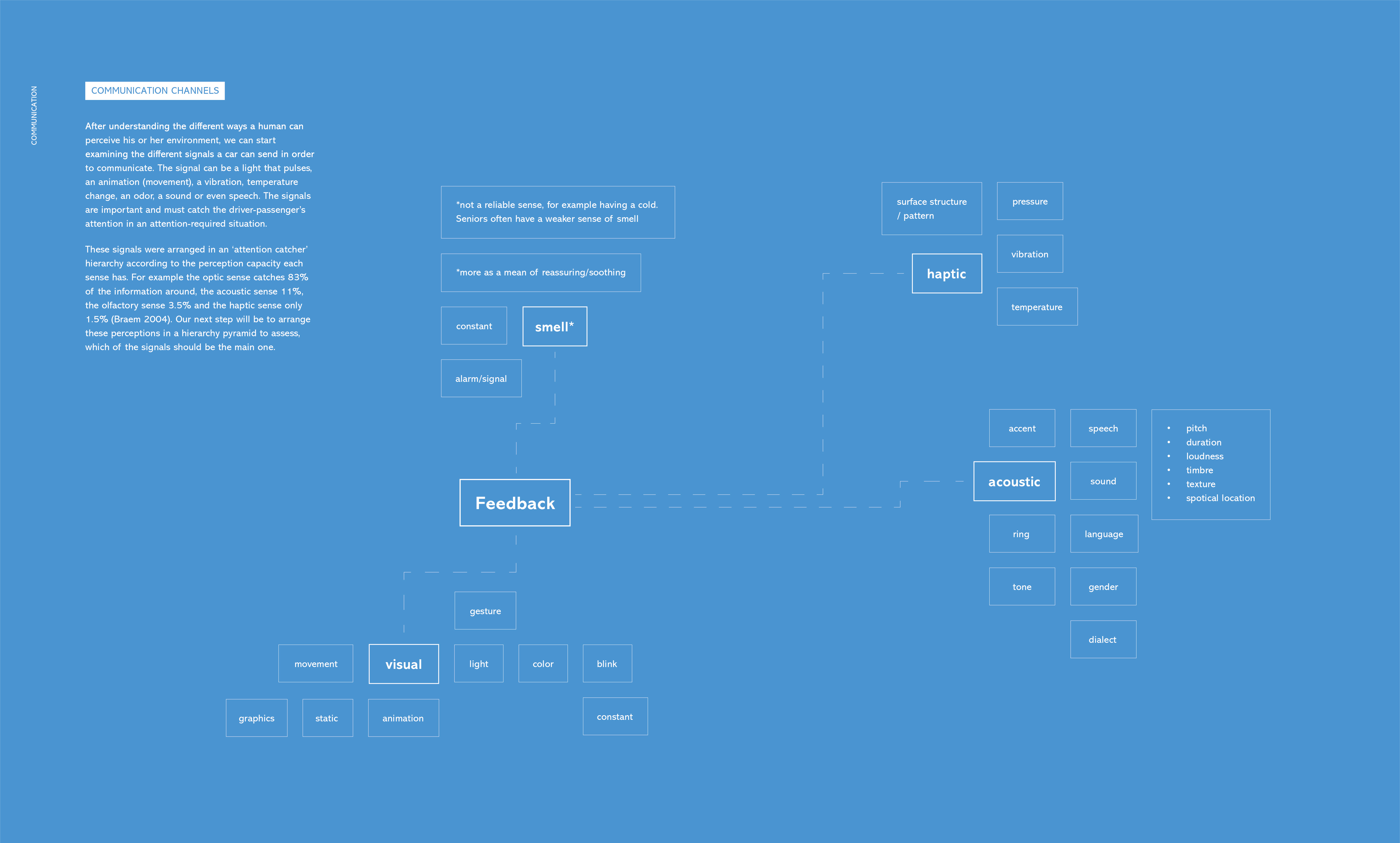Imagine you are driving in a semi-autonomous vehicle. It does the driving for you, so you decide to work on you presentation. After about an hour a snow storm starts and your level 4 (semi-autonomous) car signals you that it cannot drive in the snow, it is too dangerous, and it is time for you to drive. Now ask yourself, how would you like to be notified about the situation and that you must drive from now on?
Our thesis, “Strategy for the Human-Car Communication in the Context of Human Perception and Semi-Self-Driving Vehicles”, takes a close look at future automated and autonomous vehicles and how they may communicate with us. A semi-autonomous car (level 4) is the place where a driver is also a passenger. In this case the car drives most of the time, though the driver-passenger is not entirely passive, and may need to take action (drive) from time to time. Screen interface, is the communication of yesterday. Tomorrow, vehicles will notify you about an attention-required situation, through signals that are based on the human senses and perception.
Our most important finding from the research and experiment we have done, was that there is a hierarchy that says which of the three senses should be the primary communication channel with the vehicle and that an acoustic signal (tone) should be the main signal before haptic (vibration) and visual (light) signals. Our results formed a set of guidelines, that should be used by the automotive industry, for a positive consumer interaction with a semi-automated vehicle.





